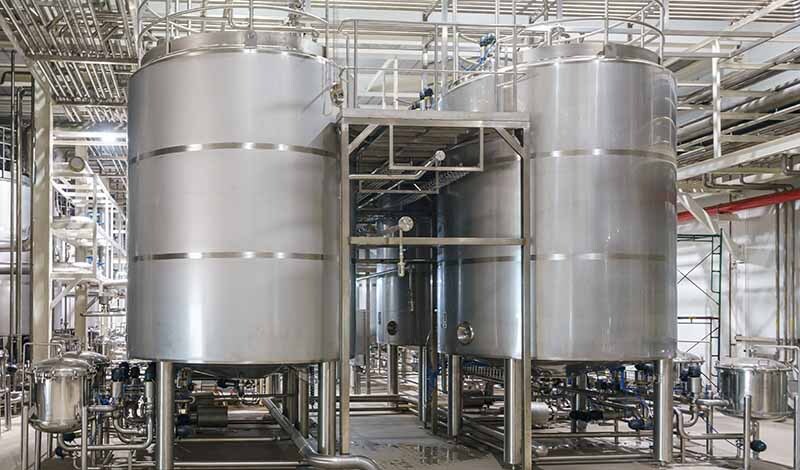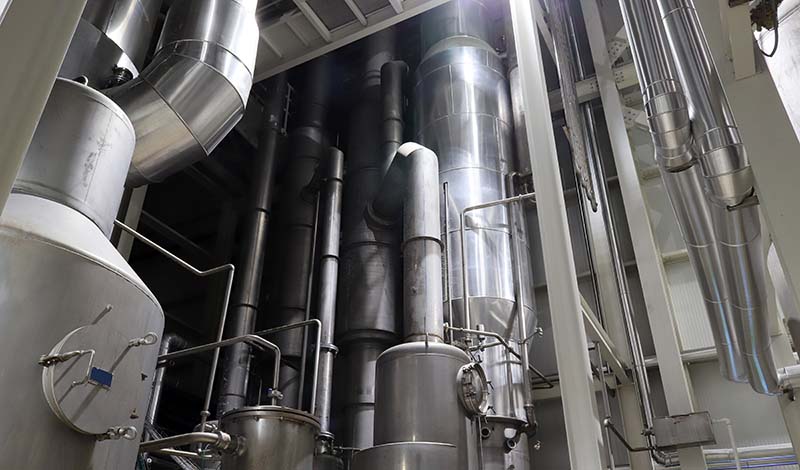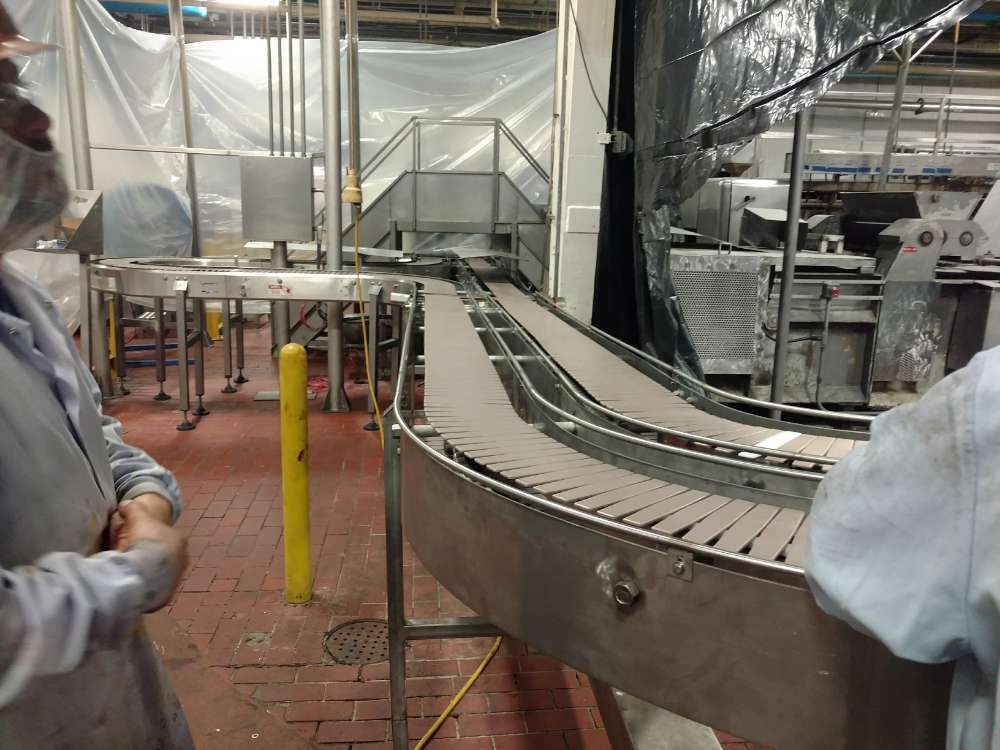
Food and beverage processing facilities understand that maintaining impeccable hygiene and cleanliness is vital to ensuring product quality, safety, and purity. Even the slightest lapse in sanitation standards can greatly impact the final product, consumer satisfaction and the company’s reputation.
This explains why most food, beverage, dairy, pharmaceutical, cosmetic, and biotechnology companies have invested in clean-in-place (CIP) systems. The main objective of these systems is to automate parts of the sanitation process to deliver a faster and repeatable approach to cleaning manufacturing systems with minimal downtime.
A clean-in-place (CIP) system is a combination of mechanical components and devices used to clean the interior contact surfaces of a processing system without dismantling parts of the equipment to accommodate cleaning. These systems combine water, chemicals, and heat to create efficient cleaning solutions for mixers, fermenters, piping vessels, fillers, blenders, and other equipment within a manufacturing or processing system.
After every processing run, a CIP cycle usually removes material buildup, soil, and other contaminants. It is also used to clean, rinse, and sanitize the equipment before switching the processing line from one product to another.
CIP system designs vary greatly depending on the application, facility standards, and industry. Even though the basic components usually remain the same, the differences in how they’re designed and used distinguish a CIP system for a dairy processing plant from that of a brewery.
CIP Skids are pre-engineered and prefabricated systems designed as an easy-to-install solution to fulfill specific requirements. They provide a physical framework for the CIP system components, allowing operators to quickly and easily assemble the system. The skid also acts as a containment base for wastewater created during the cleaning process.

CIP cycles’ sequence, duration, and elements vary from one processing system to another. However, the following are the most common steps followed by most CIP cycles:
1
A well-executed pre-rinse does the following:
2
A caustic wash softens fats and makes them easier to remove from the system. Sodium hydroxide is often used for most caustic washes due to its high pH. In most cases, the alkali is used in a concentration range of 0.5-2.0%. However, plant operators can use high concentrations of up to 4% in cases where the internal surfaces are highly contaminated.
3
The intermediate rinse helps flush out the remaining residue from the caustic wash. It’s important to use proper instrumentation for every step of the CIP cycle to ensure efficient cleaning.
4
In this step, plant operators rinse the processing system using deionized water (DO), water processed through reverse osmosis (RO), or clean city water to remove residual cleaning agents.
The final rinse water can be recovered and reused for pre-rinsing to minimize wastage. The chemicals and heat retained by the rinse water will make the next pre-rinse even more effective and efficient.
5
A sanitizing rinse is often necessary for killing germs before starting the next production run. Many experts recommend using sodium, potassium, or calcium hypochlorite solutions in your CIP cycle as sanitizers.
Manual cleaning of processing equipment is usually costly, tedious, and time-consuming. Since all processing facilities are required to maintain a certain degree of cleanliness, investing in a CIP system is the best possible cleaning solution.
The following are the advantages of a CIP system:

Consider the following when choosing a CIP system for your processing facility:
Size of the Facility – The size of the processing facility will determine the type of CIP system needed. Smaller facilities usually require compact CIP systems, while bigger facilities require more powerful cleaning solutions.
Type of Equipment – The material used for the process piping and equipment will influence the design of your CIP system. You want to ensure the system won’t cause extensive chemical and mechanical damage during cleaning operations.
Type of Product – Different types of foods and chemical contaminants present unique cleaning requirements. Therefore, considering the type of product you’ll be cleaning regularly will help you understand the features needed for your CIP system.
Budget – The full extent of CIP system features and capabilities mainly depends on the processor used and your budget. A smaller budget will get you the most basic CIP system available, while more money can buy a fully automated system.
Safety and Compliance – Ensure the CIP system you get for your specific plant complies with industry regulations.
We pick up germs daily from all kinds of places without even realizing it. With time, some of these germs can easily cause serious foodborne diseases such as salmonella, listeria, and Hepatitis A.
As a result, those involved in food production need to observe the following practices of hygienic manufacturing to ensure food safety:
Do you need help staying in compliance with OSHA regulations? At Process Equipment & Controls (PEC), we have what it takes to help you achieve the health and safety standards required in your line of business.
Contact us today to learn more about our services.